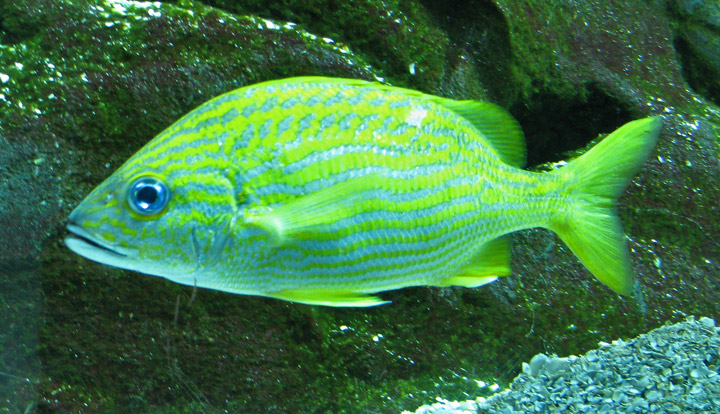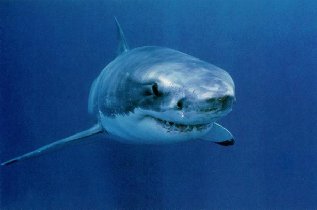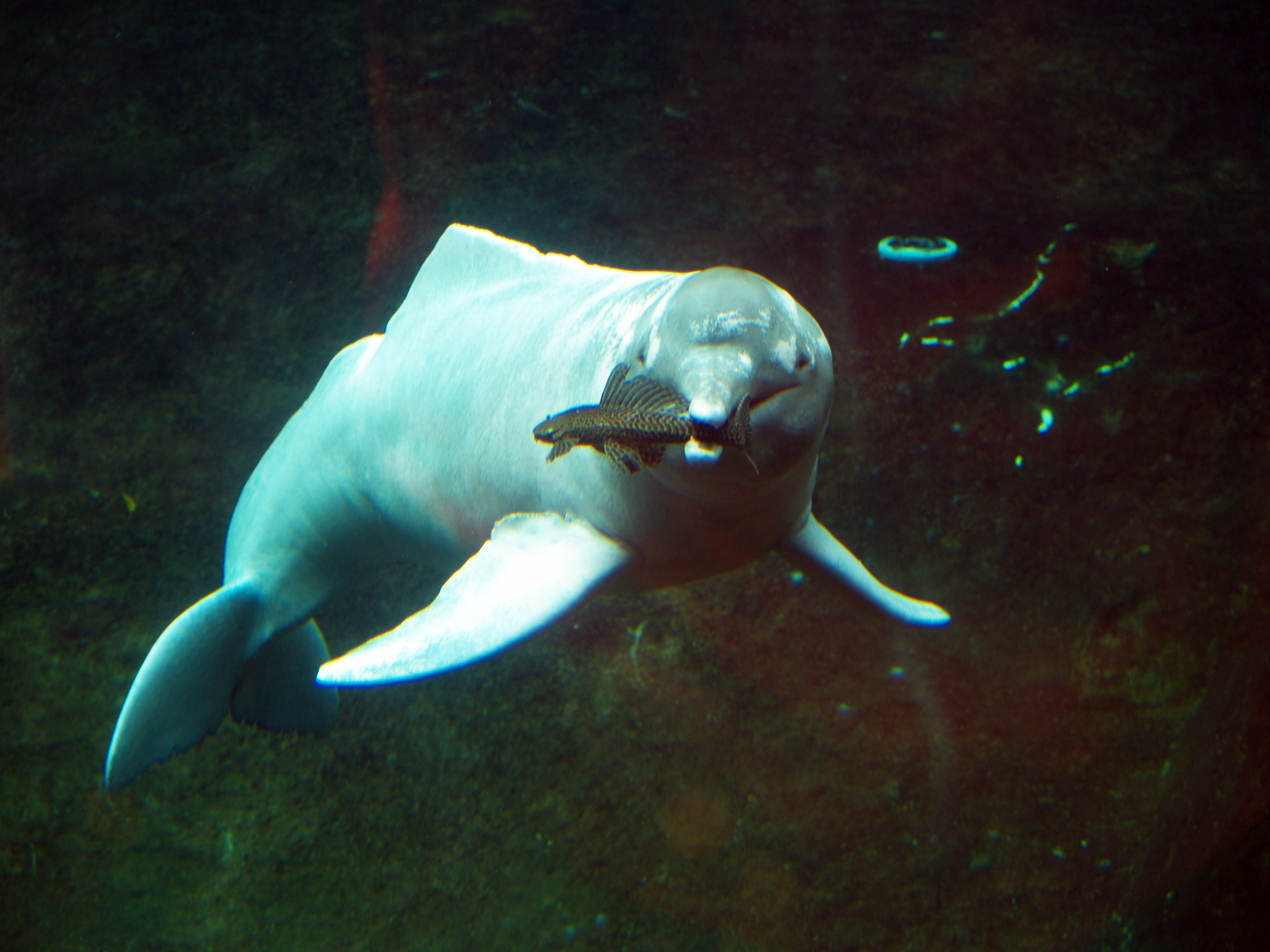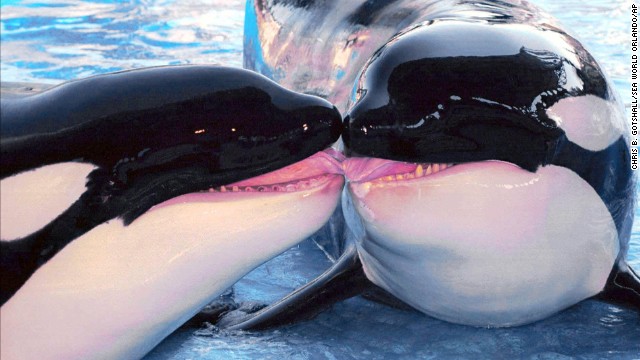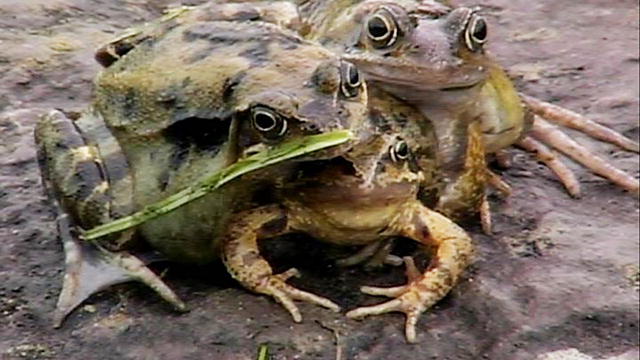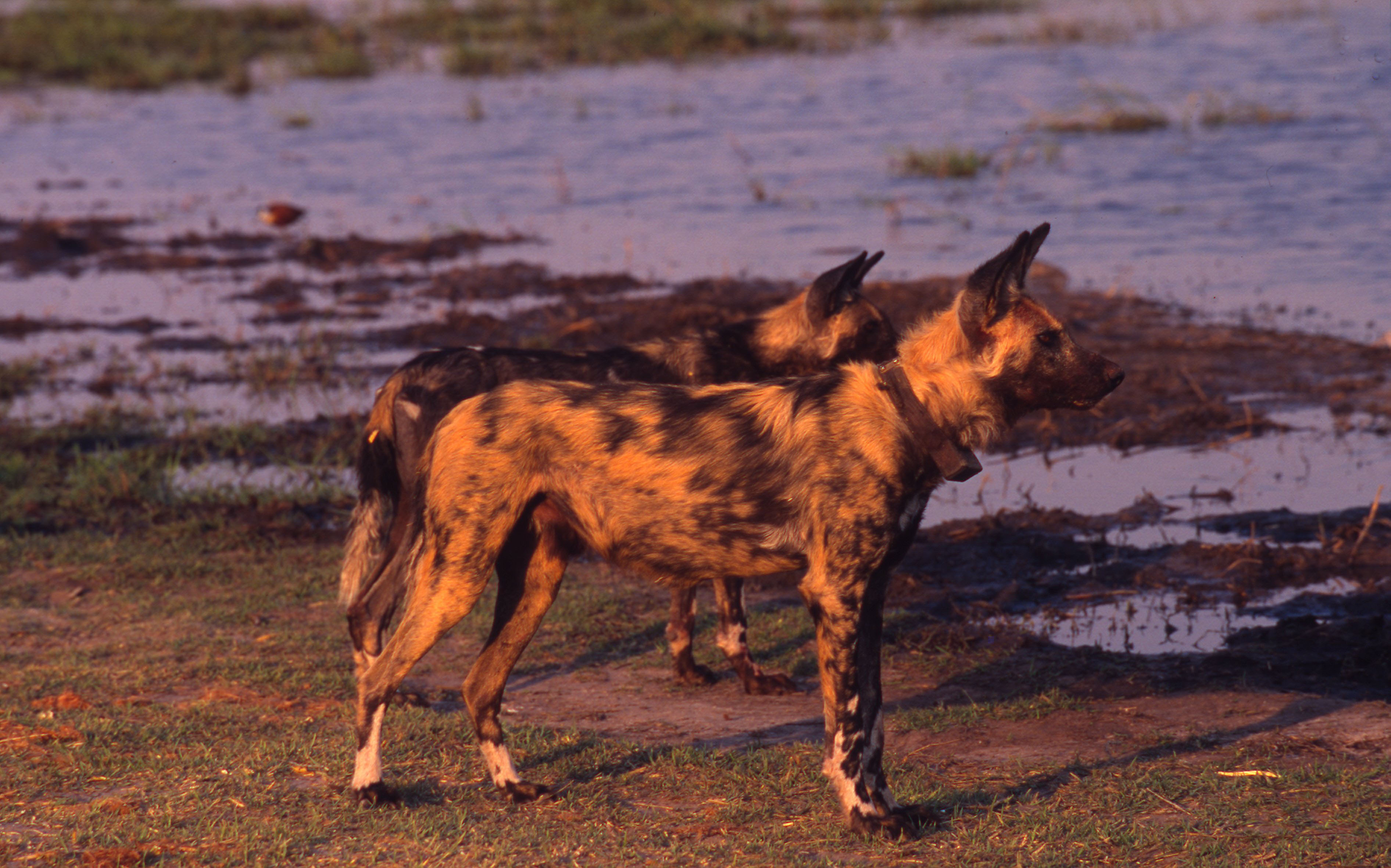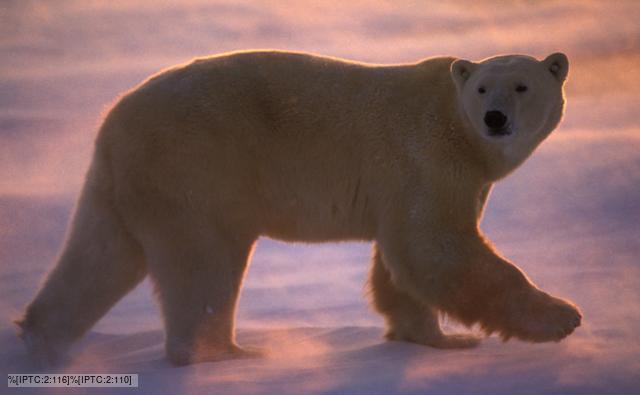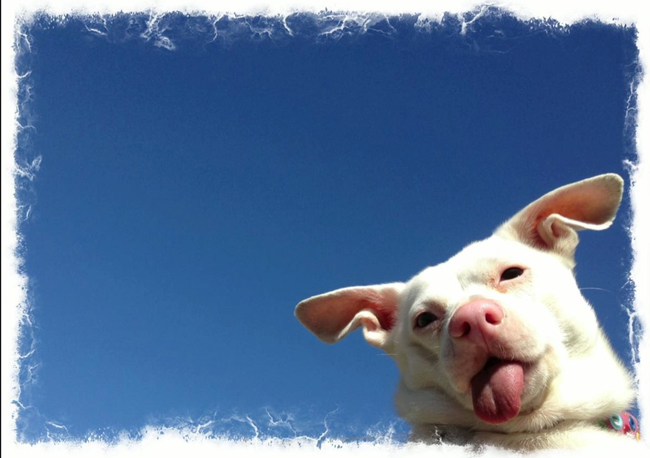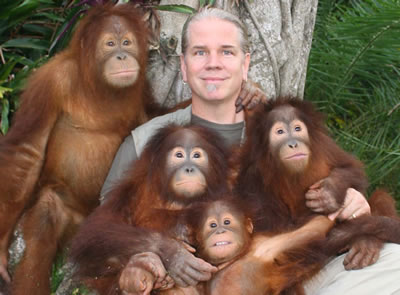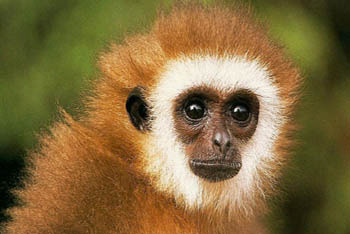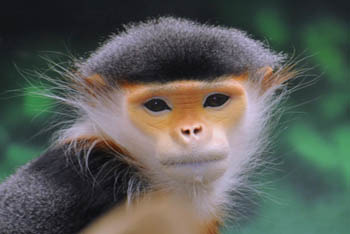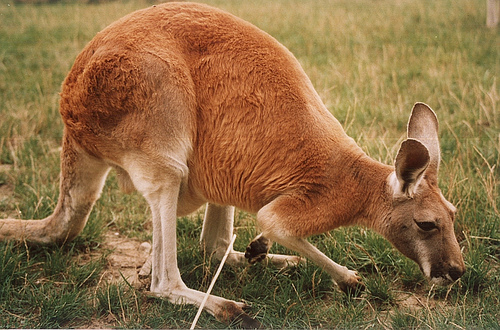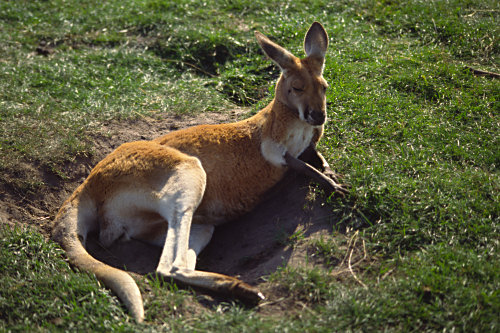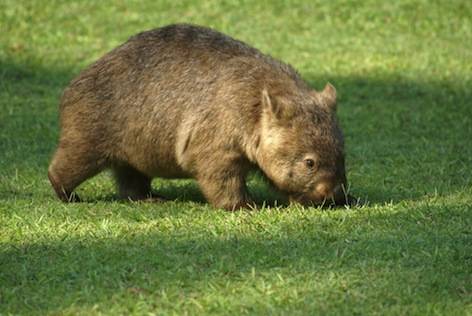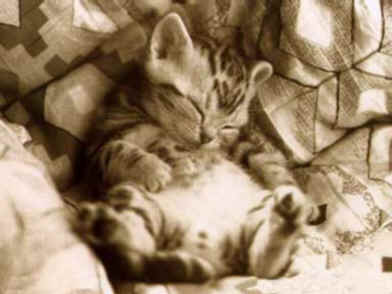Friday, December 5, 2014
Saturday, July 26, 2014
Aquatic Animals Animals Photos Images Mating With Down Syndrome With Names To Draw In The Rainforest Wallpapers With Human Teeth
Aquatic Animals Biography
Source Link Goggle.com.pkMarine biology is the scientific study of organisms in the ocean or other marine or brackish bodies of water. Given that in biology many phyla, families and genera have some species that live in the sea and others that live on land, marine biology classifies species based on the environment rather than on taxonomy. Marine biology differs from marine ecology as marine ecology is focused on how organisms interact with each other and the environment, while biology is the study of the .
A large proportion of all life on Earth exists in the ocean. Exactly how large the proportion is unknown, since many ocean species are still to be discovered. The ocean is a complex three-dimensional world[3] covering about 71% of the Earth's surface. The habitats studied in marine biology include everything from the tiny layers of surface water in which organisms and abiotic items may be trapped in surface tension between the ocean and atmosphere, to the depths of the oceanic trenches, sometimes 10,000 meters or more beneath the surface of the ocean. Specific habitats include coral reefs, kelp forests, seagrass meadows, the surrounds of seamounts and thermal vents, tidepools, muddy, sandy and rocky bottoms, and the open ocean (pelagic) zone, where solid objects are rare and the surface of the water is the only visible boundary. The organisms studied range from microscopic phytoplankton and zooplankton to huge cetaceans .
Marine life is a vast resource, providing food, medicine, and raw materials, in addition to helping to support recreation and tourism all over the world. At a fundamental level, marine life helps determine the very nature of our planet. Marine organisms contribute significantly to the oxygen cycle, and are involved in the regulation of the Earth's climate.[4] Shorelines are in part shaped and protected by marine life, and some marine organisms even help create new land.[5]
Many species are economically important to humans, including food fish (both finfish and shellfish). It is also becoming understood that the well-being of marine organisms and other organisms are linked in very fundamental ways. The human body of knowledge regarding the relationship between life in the sea and important cycles is rapidly growing, with new discoveries being made nearly every day. These cycles include those of matter (such as the carbon cycle) and of air (such as Earth's respiration, and movement of energy through ecosystems including the ocean). Large areas beneath the ocean surface still remain effectively unexplored.The earliest instances of the study of Marine Biology can be traced back to Aristotle who made several contributions which laid the foundation for many future discoveries and were the first big steps in the early exploration period of the ocean and marine life.[6] British naturalist, Edward Forbes was also a key player in the history of marine biology and is considered by many as the founder of the science of oceanography and marine biology.[7] Overall, the pace of oceanographic and marine biology studies quickly accelerated during the course of the 19th century.
The observations made in the first studies of marine biology fueled the age of discovery and exploration that followed. During this time, a vast amount of knowledge was gained about the life that exists in the oceans of the world. Many voyages contributed significantly to this pool of knowledge. Among some of the most significant is the H.M.S Beagle where Charles Darwin came up with his theories of evolution and on the formation of coral reefs.[8] Another important expedition is the H.M.S Challenger where findings of unexpectedly high species diversity of fauna stimulated much theorizing by population ecologists on how such varieties of life could be maintained in what was thought to be such a hostile environment.[9] This era was extremely important for the history of marine biology but naturalists were still limited in their studies simply because they lacked certain technology that would allow them to accurately examine the species
The creation of marine labs was important because marine scientists had places to conduct research and process their specimens from expeditions. One of the most important marine labs is Woods Hole Oceanographic Institute where scientists stayed and conducted years of significant research and made many important findings.[10] There were also many technological advances that further enhanced the study of marine biology. For example, sound navigation ranging, scuba diving gear, submersibles and remotely operated vehicles, to name a few, are some of the more impactful technologies in marine biology which allowed naturalists to explore depths of the oceans that people once thought never existed[1he marine ecosystem is large, and thus there are many sub-fields of marine biology. Most involve studying specializations of particular animal groups,
Other subfields study the physical effects of continual immersion in sea water and the ocean in general, adaptation to a salty environment, and the effects of changing various oceanic properties on marine life. A subfield of marine biology studies the relationships between oceans and ocean life, and global warming and environmental issues (such as carbon dioxide displacement).
Recent marine biotechnology has focused largely on marine biomolecules, especially proteins, that may have uses in medicine or engineering. Marine environments are the home to many exotic biological materials that may inspire biomimetic materials.Reptiles which inhabit or frequent the sea include sea turtles, sea snakes, terrapins, the marine iguana, and the saltwater crocodile. Most extant marine reptiles, except for some sea snakes, are oviparous and need to return to land to lay their eggs. Thus most species, excepting sea turtles, spend most of their lives on or near land rather than in the ocean. Despite their marine adaptations, most sea snakes prefer shallow waters nearby land, around islands, especially waters that are somewhat sheltered, as well as near estuaries.[14][15] Some extinct marine reptiles, such as ichthyosaurs, evolved to be viviparous and had no requirement to return to land.Plant life is widespread and very diverse under the ocean. Microscopic photosynthetic algae contribute a larger proportion of the world's photosynthetic output than all the terrestrial forests combined. Most of the niche occupied by sub plants on land is actually occupied by macroscopic algae in the ocean, such as Sargassum and kelp, which are commonly known as seaweeds that creates kelp forests. The non algae plants that survive in the sea are often found in shallow waters, such as the seagrasses (examples of which are eelgrass, Zostera, and turtle grass, Thalassia). These plants have adapted to the high salinity of the ocean environment. The intertidal zone is also a good place to find plant life in the sea, where mangroves or cordgrass or beach grass might grow. Microscopic algae and plants provide important habitats for life, sometimes acting as hiding and foraging places for larval forms of larger fish and invertebrates.Microscopic life undersea is incredibly diverse and still poorly understood. For example, the role of viruses in marine ecosystems is barely being explored even
The role of phytoplankton is better understood due to their critical position as the most numerous primary producers on Earth. Phytoplankton are categorized into cyanobacteria (also called blue-green algae/bacteria), various types of algae (red, green, brown, and yellow-green), diatoms, dinoflagellates, euglenoids, coccolithophorids, cryptomonads, chrysophytes, chlorophytes,
Zooplankton tend to be somewhat larger, and not all are microscopic. Many Protozoa are zooplankton, including dinoflagellates, zooflagellates, foraminiferans, and radiolarians. Some of these (such as dinoflagellates) are also phytoplankton; the distinction between plants and animals often breaks down in very small organisms. Other zooplankton include cnidarians, ctenophores, chaetognaths, molluscs, arthropods, urochordates, and annelids such as polychaetes. Many larger animals begin their life as zooplankton before they become large enough to take their familiar forms. Two examples are fish larvae and sea stars (also called starfishMarine habitats can be divided into coastal and open ocean habitats. Coastal habitats are found in the area that extends from the shoreline to the edge of the continental shelf. Most marine life is found in coastal habitats, even though the shelf area occupies only seven percent of the total ocean area. Open ocean habitats are found in the deep ocean beyond the edge of the continental shelf
Alternatively, marine habitats can be divided into pelagic and demersal habitats. Pelagic habitats are found near the surface or in the open water column, away from the bottom of the ocean. Demersal habitats are near or on the bottom of the ocean. An organism living in a pelagic habitat is said to be a pelagic organism, as in pelagic fish. Similarly, an organism living in a demersal habitat is said to be a demersal organism, as in demersal fish. Pelagic habitats are intrinsically
Marine habitats can be modified by their inhabitants. Some marine organisms, like corals, kelp and seagrasses, are ecosystem engineers which reshape the marine environment to the point where they create further habitat for other organisms.An active research topic in marine biology is to discover and map the life cycles of various species and where they spend their time. Marine biologists study how the ocean currents, tides and many other oceanic factors affect ocean life forms, including their growth, distribution and well-being. This has only recently become technically feasible with advances in GPS and newer underwater visual devices.[citation needed]
Most ocean life breeds in specific places, nests or not in others, spends time as juveniles in still others, and in maturity in yet others. Scientists know little about where many species spend different parts of their life cycles. For example, it is still largely unknown where sea turtles and some sharks travel. Tracking devices do not work for some life forms, and the ocean is not friendly to technology. This is important to scientists and fishermen because they are discovering that by restricting commercial fishing in one small area they can have a large impact in maintaining a healthy fish population in a much larger area far away.
Aquatic Animals Animals Photos Images Mating With Down Syndrome With Names To Draw In The Rainforest Wallpapers With Human Teeth
Aquatic Animals Animals Photos Images Mating With Down Syndrome With Names To Draw In The Rainforest Wallpapers With Human Teeth
Aquatic Animals Animals Photos Images Mating With Down Syndrome With Names To Draw In The Rainforest Wallpapers With Human Teeth
Aquatic Animals Animals Photos Images Mating With Down Syndrome With Names To Draw In The Rainforest Wallpapers With Human Teeth
Aquatic Animals Animals Photos Images Mating With Down Syndrome With Names To Draw In The Rainforest Wallpapers With Human Teeth
Aquatic Animals Animals Photos Images Mating With Down Syndrome With Names To Draw In The Rainforest Wallpapers With Human Teeth
Aquatic Animals Animals Photos Images Mating With Down Syndrome With Names To Draw In The Rainforest Wallpapers With Human Teeth
Aquatic Animals Animals Photos Images Mating With Down Syndrome With Names To Draw In The Rainforest Wallpapers With Human Teeth
Aquatic Animals Animals Photos Images Mating With Down Syndrome With Names To Draw In The Rainforest Wallpapers With Human Teeth
Aquatic Animals Animals Photos Images Mating With Down Syndrome With Names To Draw In The Rainforest Wallpapers With Human Teeth
Aquatic Animals Animals Photos Images Mating With Down Syndrome With Names To Draw In The Rainforest Wallpapers With Human Teeth
Wild Animals Videos Animals Photos Images Mating With Down Syndrome With Names To Draw In The Rainforest Wallpapers With Human Teeth
Wild Animals Videos Biography
Source Link Goggle.com.pkThe Animals were a British band of the 1960s, formed in Newcastle upon Tyne during the early part of the decade. The band moved to London upon finding fame in 1964. The Animals were known for their gritty, bluesy sound and deep-voiced frontman Eric Burdon, as exemplified by their signature song and transatlantic No.1 hit single, "The House of the Rising Sun", as well as by hits such as "We Gotta Get out of This Place", "It's My Life", "I'm Crying" and "Don't Let Me Be Misunderstood". The band balanced tough, rock-edged pop singles against rhythm and blues-oriented album material. They were known in the US as part of the British Invasion.
The Animals underwent numerous personnel changes in the mid-1960s and suffered from poor business management. Under the name Eric Burdon and the Animals, the much-changed act moved to California and achieved commercial success as a psychedelic and hard rock band with hits like "San Franciscan Nights", "When I Was Young" and "Sky Pilot", before disbanding at the end of the decade. Altogether, the group had ten Top Twenty hits in both the UK Singles
The original lineup had brief comebacks in 1975 and 1983. There have been several partial regroupings of the original era members since then under various names. The Animals were inducted into the Rock and Roll Hall of Fame in 1994.Formed in Newcastle upon Tyne during 1962 and 1963, when Burdon joined the Alan Price Rhythm and Blues Combo, the original line-up was Eric Burdon (vocals), Alan Price (organ and keyboards), Hilton Valentine (guitar), John Steel
It has often been said they were dubbed "animals" because of their wild stage act, and the name stuck.[3] In a 2013 interview, Eric Burdon denied this, stating it came from a gang of friends they used to hang out with, one of whom was "Animal" Hogg and the name was intended as a kind of tribute to him.[4] The Animals' success in their hometown and a connection with Yardbirds manager Giorgio Gomelsky motivated them to move to London in 1964 in the immediate wake of Beatlemania and the beat boom take-over of the popular music scene, just in time to play an
The Animals performed fiery versions of the staple rhythm and blues repertoire, covering songs by Jimmy Reed, John Lee Hooker, Nina Simone, and others. Signed to EMI's Columbia label, a rocking version of the standard "Bay Let Me Follow You Down" (retitled "Baby Let Me Take
It was followed in June 1964 by the transatlantic number 1 hit "House of the Rising Sun". Burdon's howling vocals and the dramatic arrangement, featuring Alan Price's haunting organ riffs, created arguably the first folk rock hit.[6][7] There is ongoing debate regarding the Animals' inspiration for their arrangement of the song, which has variously been ascribed to prior versions by Bob Dylan, folk singer Dave Van Ronk, blues singer Josh White (who recorded it twice in 1944 and 1949), and singer/pianist Nina Simone (who recorded it in 1962 on Nina at the Village Gate).
The Animals' two-year chart career, produced by Mickie Most, featured intense, gritty pop music covers such as Sam Cooke's "Bring It On Home To Me" and the Nina Simone-popularised number "Don't Let Me Be Misunderstood". In contrast, their album tracks stayed with rhythm and blues, with John Lee Hooker's "Boom Boom" and Ray Charles' "I Believe to My Soul" as
In November 1964, the group was poised to make their American debut on The Ed Sullivan Show and begin a short residency performing regularly in theatres across New York City. The group arrived in New York City direct from John F. Kennedy International Airport in a motorcade formed of Sunbeam Alpine Series IV convertibles, with each car featuring a band member riding with a fashion model in the back seat and the rooftop down. The group drove to their hotel accompanied by the occasional shrieks of girls who had chased them down once they discovered who they were. The Animals sang "I'm Crying" and "The House of the Rising Sun" to a packed audience of hysterical girls screaming throughout both performances on Sullivan's show. In December, the MGM movie Get Yourself a College Girl was released with the Animals headlining with the Dave Clark Five. The Animals sang a Chuck Berry song, "Around and Around", in the
By May 1965, the group was starting to feel internal pressures. Price left due to personal and musical differences as well as fear of flying on tour.[3] He went on to a successful career as a solo artist and with The Alan Price Set. Mick Gallagher filled in for him on keyboards for a short time until Dave Rowberry replaced him and was on hand for the hit songs "We Gotta Get out of This
Around that time, the Animals put together a big band to play at the 5th Annual British Jazz & Blues Festival in Richmond. The Animals Big Band made their one public appearance on 5 August 1965. As well as Burdon, Rowberry, Valentine, Chandler, and Steel, they featured a brass/horn section of Ian Carr, Kenny Wheeler, and Greg Brown on trumpets, and Stan Robinson, Al Gay,
Many of the Animals' hits had come from Brill Building songwriters recruited by Mickie Most; the group, and Burdon in particular, felt this too creatively restrictive. As 1965 ended, the group ended its association with Most, signed a new deal with their American label MGM Records for the US and Canada, and switched to Decca Records for the rest of the world and MGM Records producer Tom Wilson, who gave them more artistic freedom.[9] In early 1966 MGM collected their hits on The Best of the Animals; it became their best-selling album in the US. In February 1966, Steel left and was replaced by Barry Jenkins. A leftover rendition of Goffin-King's "Don't Bring Me Down" was the last hit as the Animals. For the single "See See Rider" the band changed its name to Eric Burdon & the Animals. By September 1966, this lineup of the group had
Burdon began work on a solo album, called Eric Is Here, which also featured Burdon's UK number 14 solo hit single, "Help Me, Girl", which he heavily promoted on TV shows such as Ready Steady Go! and Top of the Pops in late 1966. Eric Is Here was Burdon's final release for Decca
By this tme their business affairs "were in a total shambles" according to Chandler (who went on to manage Jimi Hendrix & produce Slade) and the group disbanded. Even by the standards of the day, when artists tended to be financially naïve, the Animals made very little money, eventually claiming mismanagement and theft on the part of their manager Michael Jeffery.A group with Burdon, Jenkins, and new sidemen John Weider (guitar/violin/bass), Vic Briggs (guitar/piano), and Danny McCulloch (bass) were formed under the name Eric Burdon and Animals (or sometimes Eric Burdon and the New Animals) in December 1966 and changed direction. The hard driving blues was transformed into Burdon's version of psychedelia as the former heavy drinking Geordie (who later said he could never get used to Newcastle "where the rain comes at you sideways") relocated to California and became a spokesman for the Love Generation.
Some of this group's hits included "San Franciscan Nights", "Monterey" (a tribute to the 1967 Monterey Pop Festival), and "Sky Pilot". Their sound was much heavier than the original group. Burdon screamed more and louder on live versions of "Paint It Black" and "Hey Gyp". In 1968, they had a more experimental sound on songs like "We Love You Lil" and the 19-minute record "New York 1963 - America 1968". The songs had a style of being silent at the beginning and then becoming psychedelic and raw straight to the end with screaming, strange lyrics and "scrubbing"
There were further changes to this lineup: Zoot Money was added in April 1968, initially as organist/pianist only, but upon McCulloch's departure he also took on bass and occasional lead vocals. In July 1968, Andy Summers replaced Briggs. Both Money and Summers were formerly of British psychedelic outfit Dantalian's Chariot, and much of this new lineup's set was composed of Dantalian's Chariot songs which caught Burdon's interest.[10] Due to Money's multi-instrumental load, in live settings bass was played alternately by Weider and Summers.[11]
By December 1968, these Animals had dissolved, and both their double album Love Is and the singles "Ring of Fire" and "River Deep – Mountain High" were internationally released. Numerous reasons have been cited for the breakup, the most famous being an aborted Japanese tour. The tour had been scheduled for September 1968 but was delayed until November, due to difficulty obtaining visas.[11] Only a few dates into the tour, the promoters - who, unbeknownst to the band, were yakuza - kidnapped the band's manager and threatened him at gunpoint to write an IOU for $25,000 to cover losses incurred by the tour's delay.[11] The manager wrote out the IOU but, correctly surmising that none of his captors could read English, added a note that it was written under duress.[12] The yakuza released him but warned that he and the band would have to leave Japan the next day or be killed. The Animals promptly fled the country, leaving all their tour equipment behind.[11] Money and Summers both subsequently pursued solo careers (though this pursuit was swiftly aborted in Summers' case), Weider signed up with Family, and Burdon joined forces with a Latin group from Long Beach, California, called War.[citation needed]he original Animals were inducted into the Rock and Roll Hall of Fame in 1994.[1] In 2003, the band's version of "The House of the Rising Sun" ranked No. 123 on Rolling Stone magazine's 500 Greatest Songs of All Time list. Their 1965 hit single "We Gotta Get out of This Place" was ranked No. 233 on the same list. Both songs are included in The Rock and Roll Hall of Fame's 500 Songs that
On 15 March 2012, in a keynote speech to an audience at the South by Southwest music festival, Bruce Springsteen discussed the Animals' influence on his music at length, stating, "To me, the Animals were a revelation. They were the first records with full-blown class consciousness that I'd ever heard." He said of "We Gotta Get Out of This Place" (written by two New York songwriters, Barry Mann and Cynthia Weil): "That's every song I've ever written... That's 'Born to Run,' 'Born in the U.S.A.,' everything I've done for the past 40 years including all the new ones. That struck me so deep. It was the first time I felt I heard something come across the radio that mirrored my home life, my childhood." Saying that his album Darkness on the Edge of Town was "filled with Animals," Springsteen played the opening riffs to "Don't Let Me Be Misunderstood" and his own "Badlands" back to back, then said, "Listen up, youngsters! This is how successful
Tony Banks, the keyboard player of British progressive rock band Genesis drew influence from Alan Price, whom he regarded as "[t]he first person who made me aware of the organ in a rock
Wild Animals Videos Animals Photos Images Mating With Down Syndrome With Names To Draw In The Rainforest Wallpapers With Human Teeth
Wild Animals Videos Animals Photos Images Mating With Down Syndrome With Names To Draw In The Rainforest Wallpapers With Human Teeth
Wild Animals Videos Animals Photos Images Mating With Down Syndrome With Names To Draw In The Rainforest Wallpapers With Human Teeth
Wild Animals Videos Animals Photos Images Mating With Down Syndrome With Names To Draw In The Rainforest Wallpapers With Human Teeth
Wild Animals Videos Animals Photos Images Mating With Down Syndrome With Names To Draw In The Rainforest Wallpapers With Human Teeth
Wild Animals Videos Animals Photos Images Mating With Down Syndrome With Names To Draw In The Rainforest Wallpapers With Human Teeth
Wild Animals Videos Animals Photos Images Mating With Down Syndrome With Names To Draw In The Rainforest Wallpapers With Human Teeth
Wild Animals Videos Animals Photos Images Mating With Down Syndrome With Names To Draw In The Rainforest Wallpapers With Human Teeth
Wild Animals Videos Animals Photos Images Mating With Down Syndrome With Names To Draw In The Rainforest Wallpapers With Human Teeth
Wild Animals Videos Animals Photos Images Mating With Down Syndrome With Names To Draw In The Rainforest Wallpapers With Human Teeth
Wild Animals Videos Animals Photos Images Mating With Down Syndrome With Names To Draw In The Rainforest Wallpapers With Human Teeth
All About Animals Animals Photos Images Mating With Down Syndrome With Names To Draw In The Rainforest Wallpapers With Human Teeth
All About Animals Biography
Source Link Goggle.com.pkThe Animals were a British band of the 1960s, formed in Newcastle upon Tyne during the early part of the decade. The band moved to London upon finding fame in 1964. The Animals were known for their gritty, bluesy sound and deep-voiced frontman Eric Burdon, as exemplified by their signature song and transatlantic No.1 hit single, "The House of the Rising Sun", as well as by hits such as "We Gotta Get out of This Place", "It's My Life", "I'm Crying" and "Don't Let Me Be Misunderstood". The band balanced tough, rock-edged pop singles against rhythm and blues-oriented album material. They were known in the US as part of the British Invasion.
The Animals underwent numerous personnel changes in the mid-1960s and suffered from poor business management. Under the name Eric Burdon and the Animals, the much-changed act moved to California and achieved commercial success as a psychedelic and hard rock band with hits like "San Franciscan Nights", "When I Was Young" and "Sky Pilot", before disbanding at the end of the decade. Altogether, the group had ten Top Twenty hits in both the UK Singles
The original lineup had brief comebacks in 1975 and 1983. There have been several partial regroupings of the original era members since then under various names. The Animals were inducted into the Rock and Roll Hall of Fame in 1994.Formed in Newcastle upon Tyne during 1962 and 1963, when Burdon joined the Alan Price Rhythm and Blues Combo, the original line-up was Eric Burdon (vocals), Alan Price (organ and keyboards), Hilton Valentine (guitar), John Steel
It has often been said they were dubbed "animals" because of their wild stage act, and the name stuck.[3] In a 2013 interview, Eric Burdon denied this, stating it came from a gang of friends they used to hang out with, one of whom was "Animal" Hogg and the name was intended as a kind of tribute to him.[4] The Animals' success in their hometown and a connection with Yardbirds manager Giorgio Gomelsky motivated them to move to London in 1964 in the immediate wake of Beatlemania and the beat boom take-over of the popular music scene, just in time to play an .
The Animals performed fiery versions of the staple rhythm and blues repertoire, covering songs by Jimmy Reed, John Lee Hooker, Nina Simone, and others. Signed to EMI's Columbia label, a rocking version of the standard "Bay Let Me Follow You Down" (retitled "Baby Let Me Take
It was followed in June 1964 by the transatlantic number 1 hit "House of the Rising Sun". Burdon's howling vocals and the dramatic arrangement, featuring Alan Price's haunting organ riffs, created arguably the first folk rock hit.[6][7] There is ongoing debate regarding the Animals' inspiration for their arrangement of the song, which has variously been ascribed to prior versions by Bob Dylan, folk singer Dave Van Ronk, blues singer Josh White (who recorded it twice in 1944 and 1949), and singer/pianist Nina Simone (who recorded it in 1962 on Nina at the Village Gate).
The Animals' two-year chart career, produced by Mickie Most, featured intense, gritty pop music covers such as Sam Cooke's "Bring It On Home To Me" and the Nina Simone-popularised number "Don't Let Me Be Misunderstood". In contrast, their album tracks stayed with rhythm and blues, with John Lee Hooker's "Boom Boom" and Ray Charles' "I Believe to My Soul" as
In November 1964, the group was poised to make their American debut on The Ed Sullivan Show and begin a short residency performing regularly in theatres across New York City. The group arrived in New York City direct from John F. Kennedy International Airport in a motorcade formed of Sunbeam Alpine Series IV convertibles, with each car featuring a band member riding with a fashion model in the back seat and the rooftop down. The group drove to their hotel accompanied by the occasional shrieks of girls who had chased them down once they discovered who they were. The Animals sang "I'm Crying" and "The House of the Rising Sun" to a packed audience of hysterical girls screaming throughout both performances on Sullivan's show. In December, the MGM movie Get Yourself a College Girl was released with the Animals headlining with the Dave Clark Five. The Animals sang a Chuck Berry song, "Around and Around", in the
By May 1965, the group was starting to feel internal pressures. Price left due to personal and musical differences as well as fear of flying on tour.[3] He went on to a successful career as a solo artist and with The Alan Price Set. Mick Gallagher filled in for him on keyboards for a short time until Dave Rowberry replaced him and was on hand for the hit songs "We Gotta Get out of This
Around that time, the Animals put together a big band to play at the 5th Annual British Jazz & Blues Festival in Richmond. The Animals Big Band made their one public appearance on 5 August 1965. As well as Burdon, Rowberry, Valentine, Chandler, and Steel, they featured a brass/horn section of Ian Carr, Kenny Wheeler, and Greg Brown on trumpets, and Stan Robinson, Al Gay,
Many of the Animals' hits had come from Brill Building songwriters recruited by Mickie Most; the group, and Burdon in particular, felt this too creatively restrictive. As 1965 ended, the group ended its association with Most, signed a new deal with their American label MGM Records for the US and Canada, and switched to Decca Records for the rest of the world and MGM Records producer Tom Wilson, who gave them more artistic freedom.[9] In early 1966 MGM collected their hits on The Best of the Animals; it became their best-selling album in the US. In February 1966, Steel left and was replaced by Barry Jenkins. A leftover rendition of Goffin-King's "Don't Bring Me Down" was the last hit as the Animals. For the single "See See Rider" the band changed its name to Eric Burdon & the Animals. By September 1966, this lineup of the group had
Burdon began work on a solo album, called Eric Is Here, which also featured Burdon's UK number 14 solo hit single, "Help Me, Girl", which he heavily promoted on TV shows such as Ready Steady Go! and Top of the Pops in late 1966. Eric Is Here was Burdon's final release for Decca
By this tme their business affairs "were in a total shambles" according to Chandler (who went on to manage Jimi Hendrix & produce Slade) and the group disbanded. Even by the standards of the day, when artists tended to be financially naïve, the Animals made very little money, eventually claiming mismanagement and theft on the part of their manager Michael Jeffery.A group with Burdon, Jenkins, and new sidemen John Weider (guitar/violin/bass), Vic Briggs (guitar/piano), and Danny McCulloch (bass) were formed under the name Eric Burdon and Animals (or sometimes Eric Burdon and the New Animals) in December 1966 and changed direction. The hard driving blues was transformed into Burdon's version of psychedelia as the former heavy drinking Geordie (who later said he could never get used to Newcastle "where the rain comes at you sideways") relocated to California and became a spokesman for the Love Generation.
Some of this group's hits included "San Franciscan Nights", "Monterey" (a tribute to the 1967 Monterey Pop Festival), and "Sky Pilot". Their sound was much heavier than the original group. Burdon screamed more and louder on live versions of "Paint It Black" and "Hey Gyp". In 1968, they had a more experimental sound on songs like "We Love You Lil" and the 19-minute record "New York 1963 - America 1968". The songs had a style of being silent at the beginning and then becoming psychedelic and raw straight to the end with screaming, strange lyrics and "scrubbing"
There were further changes to this lineup: Zoot Money was added in April 1968, initially as organist/pianist only, but upon McCulloch's departure he also took on bass and occasional lead vocals. In July 1968, Andy Summers replaced Briggs. Both Money and Summers were formerly of British psychedelic outfit Dantalian's Chariot, and much of this new lineup's set was composed of Dantalian's Chariot songs which caught Burdon's interest.[10] Due to Money's multi-instrumental load, in live settings bass was played alternately by Weider and Summers.[11]
By December 1968, these Animals had dissolved, and both their double album Love Is and the singles "Ring of Fire" and "River Deep – Mountain High" were internationally released. Numerous reasons have been cited for the breakup, the most famous being an aborted Japanese tour. The tour had been scheduled for September 1968 but was delayed until November, due to difficulty obtaining visas.[11] Only a few dates into the tour, the promoters - who, unbeknownst to the band, were yakuza - kidnapped the band's manager and threatened him at gunpoint to write an IOU for $25,000 to cover losses incurred by the tour's delay.[11] The manager wrote out the IOU but, correctly surmising that none of his captors could read English, added a note that it was written under duress.[12] The yakuza released him but warned that he and the band would have to leave Japan the next day or be killed. The Animals promptly fled the country, leaving all their tour equipment behind.[11] Money and Summers both subsequently pursued solo careers (though this pursuit was swiftly aborted in Summers' case), Weider signed up with Family, and Burdon joined forces with a Latin group from Long Beach, California, called War.[citation needed]he original Animals were inducted into the Rock and Roll Hall of Fame in 1994.[1] In 2003, the band's version of "The House of the Rising Sun" ranked No. 123 on Rolling Stone magazine's 500 Greatest Songs of All Time list. Their 1965 hit single "We Gotta Get out of This Place" was ranked No. 233 on the same list. Both songs are included in The Rock and Roll Hall of Fame's 500 Songs that
On 15 March 2012, in a keynote speech to an audience at the South by Southwest music festival, Bruce Springsteen discussed the Animals' influence on his music at length, stating, "To me, the Animals were a revelation. They were the first records with full-blown class consciousness that I'd ever heard." He said of "We Gotta Get Out of This Place" (written by two New York songwriters, Barry Mann and Cynthia Weil): "That's every song I've ever written... That's 'Born to Run,' 'Born in the U.S.A.,' everything I've done for the past 40 years including all the new ones. That struck me so deep. It was the first time I felt I heard something come across the radio that mirrored my home life, my childhood." Saying that his album Darkness on the Edge of Town was "filled with Animals," Springsteen played the opening riffs to "Don't Let Me Be Misunderstood" and his own "Badlands" back to back, then said, "Listen up, youngsters! This is how successful
Tony Banks, the keyboard player of British progressive rock band Genesis drew influence from Alan Price, whom he regarded as "[t]he first person who made me aware of the organ in a rock
All About Animals Animals Photos Images Mating With Down Syndrome With Names To Draw In The Rainforest Wallpapers With Human Teeth
All About Animals Animals Photos Images Mating With Down Syndrome With Names To Draw In The Rainforest Wallpapers With Human Teeth
All About Animals Animals Photos Images Mating With Down Syndrome With Names To Draw In The Rainforest Wallpapers With Human Teeth
All About Animals Animals Photos Images Mating With Down Syndrome With Names To Draw In The Rainforest Wallpapers With Human Teeth
All About Animals Animals Photos Images Mating With Down Syndrome With Names To Draw In The Rainforest Wallpapers With Human Teeth
All About Animals Animals Photos Images Mating With Down Syndrome With Names To Draw In The Rainforest Wallpapers With Human Teeth
All About Animals Animals Photos Images Mating With Down Syndrome With Names To Draw In The Rainforest Wallpapers With Human Teeth
All About Animals Animals Photos Images Mating With Down Syndrome With Names To Draw In The Rainforest Wallpapers With Human Teeth
All About Animals Animals Photos Images Mating With Down Syndrome With Names To Draw In The Rainforest Wallpapers With Human Teeth
All About Animals Animals Photos Images Mating With Down Syndrome With Names To Draw In The Rainforest Wallpapers With Human Teeth
All About Animals Animals Photos Images Mating With Down Syndrome With Names To Draw In The Rainforest Wallpapers With Human Teeth
Animals In Australia Animals Photos Images Mating With Down Syndrome With Names To Draw In The Rainforest Wallpapers With Human Teeth
Animals In Australia Biography
Source Link Goggle.com.pkThe Animals were a British band of the 1960s, formed in Newcastle upon Tyne during the early part of the decade. The band moved to London upon finding fame in 1964. The Animals were known for their gritty, bluesy sound and deep-voiced frontman Eric Burdon, as exemplified by their signature song and transatlantic No.1 hit single, "The House of the Rising Sun", as well as by hits such as "We Gotta Get out of This Place", "It's My Life", "I'm Crying" and "Don't Let Me Be Misunderstood". The band balanced tough, rock-edged pop singles against rhythm and blues-oriented album material. They were known in the US as part of the British Invasion.
The Animals underwent numerous personnel changes in the mid-1960s and suffered from poor business management. Under the name Eric Burdon and the Animals, the much-changed act moved to California and achieved commercial success as a psychedelic and hard rock band with hits like "San Franciscan Nights", "When I Was Young" and "Sky Pilot", before disbanding at the end of the decade. Altogether, the group had ten Top Twenty hits in both the UK Singles
The original lineup had brief comebacks in 1975 and 1983. There have been several partial regroupings of the original era members since then under various names. The Animals were inducted into the Rock and Roll Hall of Fame in 1994.Formed in Newcastle upon Tyne during 1962 and 1963, when Burdon joined the Alan Price Rhythm and Blues Combo, the original line-up was Eric Burdon (vocals), Alan Price (organ and keyboards), Hilton Valentine (guitar), John Steel
It has often been said they were dubbed "animals" because of their wild stage act, and the name stuck.[3] In a 2013 interview, Eric Burdon denied this, stating it came from a gang of friends they used to hang out with, one of whom was "Animal" Hogg and the name was intended as a kind of tribute to him.[4] The Animals' success in their hometown and a connection with Yardbirds manager Giorgio Gomelsky motivated them to move to London in 1964 in the immediate wake of Beatlemania and the beat boom take-over of the popular music scene, just in time to play an important role in the so-called British Invasion of the US music charts.
The Animals performed fiery versions of the staple rhythm and blues repertoire, covering songs by Jimmy Reed, John Lee Hooker, Nina Simone, and others. Signed to EMI's Columbia label, a rocking version of the standard "Bay Let Me Follow You Down" (retitled "Baby Let Me Take
It was followed in June 1964 by the transatlantic number 1 hit "House of the Rising Sun". Burdon's howling vocals and the dramatic arrangement, featuring Alan Price's haunting organ riffs, created arguably the first folk rock hit.[6][7] There is ongoing debate regarding the Animals' inspiration for their arrangement of the song, which has variously been ascribed to prior versions by Bob Dylan, folk singer Dave Van Ronk, blues singer Josh White (who recorded it twice in 1944 and 1949), and singer/pianist Nina Simone (who recorded it in 1962 on Nina at the Village Gate).
The Animals' two-year chart career, produced by Mickie Most, featured intense, gritty pop music covers such as Sam Cooke's "Bring It On Home To Me" and the Nina Simone-popularised number "Don't Let Me Be Misunderstood". In contrast, their album tracks stayed with rhythm and blues, with John Lee Hooker's "Boom Boom" and Ray Charles' "I Believe to My Soul" as
In November 1964, the group was poised to make their American debut on The Ed Sullivan Show and begin a short residency performing regularly in theatres across New York City. The group arrived in New York City direct from John F. Kennedy International Airport in a motorcade formed of Sunbeam Alpine Series IV convertibles, with each car featuring a band member riding with a fashion model in the back seat and the rooftop down. The group drove to their hotel accompanied by the occasional shrieks of girls who had chased them down once they discovered who they were. The Animals sang "I'm Crying" and "The House of the Rising Sun" to a packed audience of hysterical girls screaming throughout both performances on Sullivan's show. In December, the MGM movie Get Yourself a College Girl was released with the Animals headlining with the Dave Clark Five. The Animals sang a Chuck Berry song, "Around and Around", in the
By May 1965, the group was starting to feel internal pressures. Price left due to personal and musical differences as well as fear of flying on tour.[3] He went on to a successful career as a solo artist and with The Alan Price Set. Mick Gallagher filled in for him on keyboards for a short time until Dave Rowberry replaced him and was on hand for the hit songs "We Gotta Get out of This .
Around that time, the Animals put together a big band to play at the 5th Annual British Jazz & Blues Festival in Richmond. The Animals Big Band made their one public appearance on 5 August 1965. As well as Burdon, Rowberry, Valentine, Chandler, and Steel, they featured a brass/horn section of Ian Carr, Kenny Wheeler, and Greg Brown on trumpets, and Stan Robinson, Al Gay,
Many of the Animals' hits had come from Brill Building songwriters recruited by Mickie Most; the group, and Burdon in particular, felt this too creatively restrictive. As 1965 ended, the group ended its association with Most, signed a new deal with their American label MGM Records for the US and Canada, and switched to Decca Records for the rest of the world and MGM Records producer Tom Wilson, who gave them more artistic freedom.[9] In early 1966 MGM collected their hits on The Best of the Animals; it became their best-selling album in the US. In February 1966, Steel left and was replaced by Barry Jenkins. A leftover rendition of Goffin-King's "Don't Bring Me Down" was the last hit as the Animals. For the single "See See Rider" the band changed its name to Eric Burdon & the Animals. By September 1966, this lineup of the group had
Burdon began work on a solo album, called Eric Is Here, which also featured Burdon's UK number 14 solo hit single, "Help Me, Girl", which he heavily promoted on TV shows such as Ready Steady Go! and Top of the Pops in late 1966. Eric Is Here was Burdon's final release for Decca
By this tme their business affairs "were in a total shambles" according to Chandler (who went on to manage Jimi Hendrix & produce Slade) and the group disbanded. Even by the standards of the day, when artists tended to be financially naïve, the Animals made very little money, eventually claiming mismanagement and theft on the part of their manager Michael Jeffery.A group with Burdon, Jenkins, and new sidemen John Weider (guitar/violin/bass), Vic Briggs (guitar/piano), and Danny McCulloch (bass) were formed under the name Eric Burdon and Animals (or sometimes Eric Burdon and the New Animals) in December 1966 and changed direction. The hard driving blues was transformed into Burdon's version of psychedelia as the former heavy drinking Geordie (who later said he could never get used to Newcastle "where the rain comes at you sideways") relocated to California and became a spokesman for the Love Generation.
Some of this group's hits included "San Franciscan Nights", "Monterey" (a tribute to the 1967 Monterey Pop Festival), and "Sky Pilot". Their sound was much heavier than the original group. Burdon screamed more and louder on live versions of "Paint It Black" and "Hey Gyp". In 1968, they had a more experimental sound on songs like "We Love You Lil" and the 19-minute record "New York 1963 - America 1968". The songs had a style of being silent at the beginning and then becoming psychedelic and raw straight to the end with screaming, strange lyrics and "scrubbing"
There were further changes to this lineup: Zoot Money was added in April 1968, initially as organist/pianist only, but upon McCulloch's departure he also took on bass and occasional lead vocals. In July 1968, Andy Summers replaced Briggs. Both Money and Summers were formerly of British psychedelic outfit Dantalian's Chariot, and much of this new lineup's set was composed of Dantalian's Chariot songs which caught Burdon's interest.[10] Due to Money's multi-instrumental load, in live settings bass was played alternately by Weider and Summers.[11]
By December 1968, these Animals had dissolved, and both their double album Love Is and the singles "Ring of Fire" and "River Deep – Mountain High" were internationally released. Numerous reasons have been cited for the breakup, the most famous being an aborted Japanese tour. The tour had been scheduled for September 1968 but was delayed until November, due to difficulty obtaining visas.[11] Only a few dates into the tour, the promoters - who, unbeknownst to the band, were yakuza - kidnapped the band's manager and threatened him at gunpoint to write an IOU for $25,000 to cover losses incurred by the tour's delay.[11] The manager wrote out the IOU but, correctly surmising that none of his captors could read English, added a note that it was written under duress.[12] The yakuza released him but warned that he and the band would have to leave Japan the next day or be killed. The Animals promptly fled the country, leaving all their tour equipment behind.[11] Money and Summers both subsequently pursued solo careers (though this pursuit was swiftly aborted in Summers' case), Weider signed up with Family, and Burdon joined forces with a Latin group from Long Beach, California, called War.[citation needed]he original Animals were inducted into the Rock and Roll Hall of Fame in 1994.[1] In 2003, the band's version of "The House of the Rising Sun" ranked No. 123 on Rolling Stone magazine's 500 Greatest Songs of All Time list. Their 1965 hit single "We Gotta Get out of This Place" was ranked No. 233 on the same list. Both songs are included in The Rock and Roll Hall of Fame's 500 Songs that
On 15 March 2012, in a keynote speech to an audience at the South by Southwest music festival, Bruce Springsteen discussed the Animals' influence on his music at length, stating, "To me, the Animals were a revelation. They were the first records with full-blown class consciousness that I'd ever heard." He said of "We Gotta Get Out of This Place" (written by two New York songwriters, Barry Mann and Cynthia Weil): "That's every song I've ever written... That's 'Born to Run,' 'Born in the U.S.A.,' everything I've done for the past 40 years including all the new ones. That struck me so deep. It was the first time I felt I heard something come across the radio that mirrored my home life, my childhood." Saying that his album Darkness on the Edge of Town was "filled with Animals," Springsteen played the opening riffs to "Don't Let Me Be Misunderstood" and his own "Badlands" back to back, then said, "Listen up, youngsters! This is how successful
Tony Banks, the keyboard player of British progressive rock band Genesis drew influence from Alan Price, whom he regarded as "[t]he first person who made me aware of the organ in a rock
Animals In Austrlia Animals Photos Images Mating With Down Syndrome With Names To Draw In The Rainforest Wallpapers With Human Teeth
Animals In Austrlia Animals Photos Images Mating With Down Syndrome With Names To Draw In The Rainforest Wallpapers With Human Teeth
Animals In Austrlia Animals Photos Images Mating With Down Syndrome With Names To Draw In The Rainforest Wallpapers With Human Teeth
Animals In Austrlia Animals Photos Images Mating With Down Syndrome With Names To Draw In The Rainforest Wallpapers With Human Teeth
Animals In Austrlia Animals Photos Images Mating With Down Syndrome With Names To Draw In The Rainforest Wallpapers With Human Teeth
Animals In Austrlia Animals Photos Images Mating With Down Syndrome With Names To Draw In The Rainforest Wallpapers With Human Teeth
Animals In Austrlia Animals Photos Images Mating With Down Syndrome With Names To Draw In The Rainforest Wallpapers With Human Teeth
Animals In Austrlia Animals Photos Images Mating With Down Syndrome With Names To Draw In The Rainforest Wallpapers With Human Teeth
Animals In Austrlia Animals Photos Images Mating With Down Syndrome With Names To Draw In The Rainforest Wallpapers With Human Teeth
Animals In Austrlia Animals Photos Images Mating With Down Syndrome With Names To Draw In The Rainforest Wallpapers With Human Teeth
Animals In Austrlia Animals Photos Images Mating With Down Syndrome With Names To Draw In The Rainforest Wallpapers With Human Teeth
Articles About Animals Animals Photos Images Mating With Down Syndrome With Names To Draw In The Rainforest Wallpapers With Human Teeth
Articles About Animals Biography
Source Link Goggle.com.pkThe Animals were a British band of the 1960s, formed in Newcastle upon Tyne during the early part of the decade. The band moved to London upon finding fame in 1964. The Animals were known for their gritty, bluesy sound and deep-voiced frontman Eric Burdon, as exemplified by their signature song and transatlantic No.1 hit single, "The House of the Rising Sun", as well as by hits such as "We Gotta Get out of This Place", "It's My Life", "I'm Crying" and "Don't Let Me Be Misunderstood". The band balanced tough, rock-edged pop singles against rhythm and blues-oriented album material. They were known in the US as part of the British Invasion.
The Animals underwent numerous personnel changes in the mid-1960s and suffered from poor business management. Under the name Eric Burdon and the Animals, the much-changed act moved to California and achieved commercial success as a psychedelic and hard rock band with hits like "San Franciscan Nights", "When I Was Young" and "Sky Pilot", before disbanding at the end of the decade. Altogether, the group had ten Top Twenty hits in both the UK Singles
The original lineup had brief comebacks in 1975 and 1983. There have been several partial regroupings of the original era members since then under various names. The Animals were inducted into the Rock and Roll Hall of Fame in 1994.Formed in Newcastle upon Tyne during 1962 and 1963, when Burdon joined the Alan Price Rhythm and Blues Combo, the original line-up was Eric Burdon (vocals), Alan Price (organ and keyboards), Hilton Valentine (guitar), John Steel
It has often been said they were dubbed "animals" because of their wild stage act, and the name stuck.[3] In a 2013 interview, Eric Burdon denied this, stating it came from a gang of friends they used to hang out with, one of whom was "Animal" Hogg and the name was intended as a kind of tribute to him.[4] The Animals' success in their hometown and a connection with Yardbirds manager Giorgio Gomelsky motivated them to move to London in 1964 in the immediate wake of Beatlemania and the beat boom take-over of the popular music scene, just in time to play an important role in the so-called British Invasion of the US music charts.
The Animals performed fiery versions of the staple rhythm and blues repertoire, covering songs by Jimmy Reed, John Lee Hooker, Nina Simone, and others. Signed to EMI's Columbia label, a rocking version of the standard "Bay Let Me Follow You Down" (retitled "Baby Let Me Take
It was followed in June 1964 by the transatlantic number 1 hit "House of the Rising Sun". Burdon's howling vocals and the dramatic arrangement, featuring Alan Price's haunting organ riffs, created arguably the first folk rock hit.[6][7] There is ongoing debate regarding the Animals' inspiration for their arrangement of the song, which has variously been ascribed to prior versions by Bob Dylan, folk singer Dave Van Ronk, blues singer Josh White (who recorded it twice in 1944 and 1949), and singer/pianist Nina Simone (who recorded it in 1962 on Nina at the Village Gate).
The Animals' two-year chart career, produced by Mickie Most, featured intense, gritty pop music covers such as Sam Cooke's "Bring It On Home To Me" and the Nina Simone-popularised number "Don't Let Me Be Misunderstood". In contrast, their album tracks stayed with rhythm and blues, with John Lee Hooker's "Boom Boom" and Ray Charles' "I Believe to My Soul" as
In November 1964, the group was poised to make their American debut on The Ed Sullivan Show and begin a short residency performing regularly in theatres across New York City. The group arrived in New York City direct from John F. Kennedy International Airport in a motorcade formed of Sunbeam Alpine Series IV convertibles, with each car featuring a band member riding with a fashion model in the back seat and the rooftop down. The group drove to their hotel accompanied by the occasional shrieks of girls who had chased them down once they discovered who they were. The Animals sang "I'm Crying" and "The House of the Rising Sun" to a packed audience of hysterical girls screaming throughout both performances on Sullivan's show. In December, the MGM movie Get Yourself a College Girl was released with the Animals headlining with the Dave Clark Five. The Animals sang a Chuck Berry song, "Around and Around", in the
By May 1965, the group was starting to feel internal pressures. Price left due to personal and musical differences as well as fear of flying on tour.[3] He went on to a successful career as a solo artist and with The Alan Price Set. Mick Gallagher filled in for him on keyboards for a short time until Dave Rowberry replaced him and was on hand for the hit songs "We Gotta Get out of This ".
Around that time, the Animals put together a big band to play at the 5th Annual British Jazz & Blues Festival in Richmond. The Animals Big Band made their one public appearance on 5 August 1965. As well as Burdon, Rowberry, Valentine, Chandler, and Steel, they featured a brass/horn section of Ian Carr, Kenny Wheeler, and Greg Brown on trumpets, and Stan Robinson, Al Gay, .
Many of the Animals' hits had come from Brill Building songwriters recruited by Mickie Most; the group, and Burdon in particular, felt this too creatively restrictive. As 1965 ended, the group ended its association with Most, signed a new deal with their American label MGM Records for the US and Canada, and switched to Decca Records for the rest of the world and MGM Records producer Tom Wilson, who gave them more artistic freedom.[9] In early 1966 MGM collected their hits on The Best of the Animals; it became their best-selling album in the US. In February 1966, Steel left and was replaced by Barry Jenkins. A leftover rendition of Goffin-King's "Don't Bring Me Down" was the last hit as the Animals. For the single "See See Rider" the band changed its name to Eric Burdon & the Animals. By September 1966, this lineup of the group had
Burdon began work on a solo album, called Eric Is Here, which also featured Burdon's UK number 14 solo hit single, "Help Me, Girl", which he heavily promoted on TV shows such as Ready Steady Go! and Top of the Pops in late 1966. Eric Is Here was Burdon's final release for Decca
By this tme their business affairs "were in a total shambles" according to Chandler (who went on to manage Jimi Hendrix & produce Slade) and the group disbanded. Even by the standards of the day, when artists tended to be financially naïve, the Animals made very little money, eventually claiming mismanagement and theft on the part of their manager Michael Jeffery.A group with Burdon, Jenkins, and new sidemen John Weider (guitar/violin/bass), Vic Briggs (guitar/piano), and Danny McCulloch (bass) were formed under the name Eric Burdon and Animals (or sometimes Eric Burdon and the New Animals) in December 1966 and changed direction. The hard driving blues was transformed into Burdon's version of psychedelia as the former heavy drinking Geordie (who later said he could never get used to Newcastle "where the rain comes at you sideways") relocated to California and became a spokesman for the Love Generation.
Some of this group's hits included "San Franciscan Nights", "Monterey" (a tribute to the 1967 Monterey Pop Festival), and "Sky Pilot". Their sound was much heavier than the original group. Burdon screamed more and louder on live versions of "Paint It Black" and "Hey Gyp". In 1968, they had a more experimental sound on songs like "We Love You Lil" and the 19-minute record "New York 1963 - America 1968". The songs had a style of being silent at the beginning and then becoming psychedelic and raw straight to the end with screaming, strange lyrics and "scrubbing"
There were further changes to this lineup: Zoot Money was added in April 1968, initially as organist/pianist only, but upon McCulloch's departure he also took on bass and occasional lead vocals. In July 1968, Andy Summers replaced Briggs. Both Money and Summers were formerly of British psychedelic outfit Dantalian's Chariot, and much of this new lineup's set was composed of Dantalian's Chariot songs which caught Burdon's interest.[10] Due to Money's multi-instrumental load, in live settings bass was played alternately by Weider and Summers.[11]
By December 1968, these Animals had dissolved, and both their double album Love Is and the singles "Ring of Fire" and "River Deep – Mountain High" were internationally released. Numerous reasons have been cited for the breakup, the most famous being an aborted Japanese tour. The tour had been scheduled for September 1968 but was delayed until November, due to difficulty obtaining visas.[11] Only a few dates into the tour, the promoters - who, unbeknownst to the band, were yakuza - kidnapped the band's manager and threatened him at gunpoint to write an IOU for $25,000 to cover losses incurred by the tour's delay.[11] The manager wrote out the IOU but, correctly surmising that none of his captors could read English, added a note that it was written under duress.[12] The yakuza released him but warned that he and the band would have to leave Japan the next day or be killed. The Animals promptly fled the country, leaving all their tour equipment behind.[11] Money and Summers both subsequently pursued solo careers (though this pursuit was swiftly aborted in Summers' case), Weider signed up with Family, and Burdon joined forces with a Latin group from Long Beach, California, called War.[citation needed]he original Animals were inducted into the Rock and Roll Hall of Fame in 1994.[1] In 2003, the band's version of "The House of the Rising Sun" ranked No. 123 on Rolling Stone magazine's 500 Greatest Songs of All Time list. Their 1965 hit single "We Gotta Get out of This Place" was ranked No. 233 on the same list. Both songs are included in The Rock and Roll Hall of Fame's 500 Songs that
On 15 March 2012, in a keynote speech to an audience at the South by Southwest music festival, Bruce Springsteen discussed the Animals' influence on his music at length, stating, "To me, the Animals were a revelation. They were the first records with full-blown class consciousness that I'd ever heard." He said of "We Gotta Get Out of This Place" (written by two New York songwriters, Barry Mann and Cynthia Weil): "That's every song I've ever written... That's 'Born to Run,' 'Born in the U.S.A.,' everything I've done for the past 40 years including all the new ones. That struck me so deep. It was the first time I felt I heard something come across the radio that mirrored my home life, my childhood." Saying that his album Darkness on the Edge of Town was "filled with Animals," Springsteen played the opening riffs to "Don't Let Me Be Misunderstood" and his own "Badlands" back to back, then said, "Listen up, youngsters! This is how successful ]
Tony Banks, the keyboard player of British progressive rock band Genesis drew influence from Alan Price, whom he regarded as "[t]he first person who made me aware of the organ in a rock
Articles About Animals Animals Photos Images Mating With Down Syndrome With Names To Draw In The Rainforest Wallpapers With Human Teeth
Articles About Animals Animals Photos Images Mating With Down Syndrome With Names To Draw In The Rainforest Wallpapers With Human Teeth
Articles About Animals Animals Photos Images Mating With Down Syndrome With Names To Draw In The Rainforest Wallpapers With Human Teeth
Articles About Animals Animals Photos Images Mating With Down Syndrome With Names To Draw In The Rainforest Wallpapers With Human Teeth
Articles About Animals Animals Photos Images Mating With Down Syndrome With Names To Draw In The Rainforest Wallpapers With Human Teeth
Articles About Animals Animals Photos Images Mating With Down Syndrome With Names To Draw In The Rainforest Wallpapers With Human Teeth
Articles About Animals Animals Photos Images Mating With Down Syndrome With Names To Draw In The Rainforest Wallpapers With Human Teeth
Articles About Animals Animals Photos Images Mating With Down Syndrome With Names To Draw In The Rainforest Wallpapers With Human Teeth
Articles About Animals Animals Photos Images Mating With Down Syndrome With Names To Draw In The Rainforest Wallpapers With Human Teeth
Articles About Animals Animals Photos Images Mating With Down Syndrome With Names To Draw In The Rainforest Wallpapers With Human Teeth
Articles About Animals Animals Photos Images Mating With Down Syndrome With Names To Draw In The Rainforest Wallpapers With Human Teeth
Subscribe to:
Comments (Atom)


